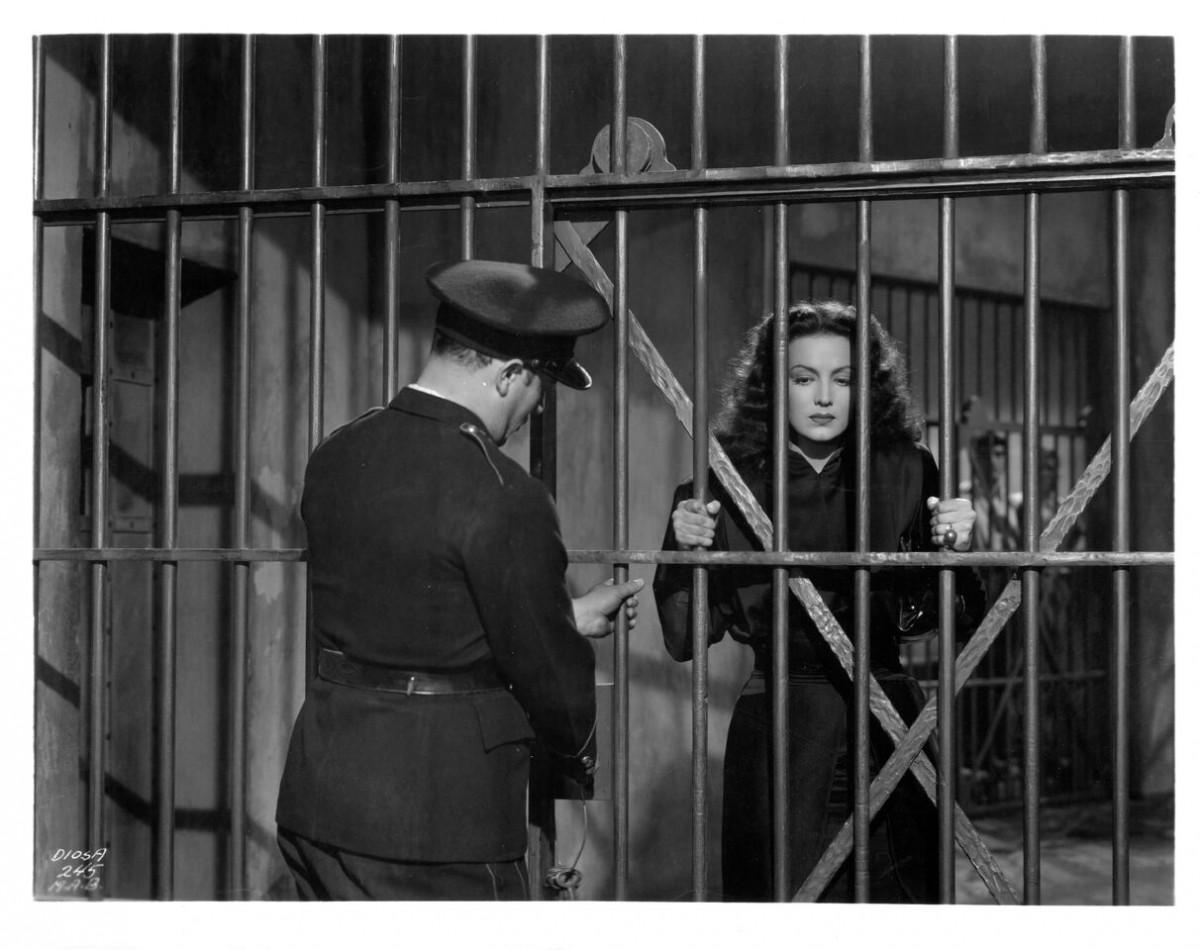
MEXICO NOIR From March 25th to April 3rd
Night is the setting for the thriller, the detective film and the film noir; for the antihero consumed by jealousy, mistrust and uncertainty, wrapped upin his own pride, recklessness and bravado, and held by destiny that is implacable and cruel, racing through a maze of memories where the present tangles up with the past, with nihilism and disillusionment with society.Mexico Noir, one of the great legacies of the Alemán administration (Miguel Alemán Valdés was president of Mexico from 1946 - 1952), is a metaphor of the times, replete with films that follow the reactions and formulas of the suspense genre and melodrama—an equation of blood, sweat, tears, not to mention adrenaline and sexual fluids—and that crisscross to create crime thrillers, cabaret films, tales of poverty and slums, of intrigues and espionage that end inviolence. Rafael Aviña
The Golden Age of Mexican cinema extended from the mid-1930s to the early 1960s, when Mexican films dominated Latin America and made significant inroads into Spanish-speaking communities throughout North America. At its height, in the decade during and following World War II, Mexican popular filmmaking achieved a level of quality comparable to Hollywood, with a robust star system with such magnetic performers as Dolores del Río, Pedro Armendáriz, María Félix, and Arturo de Córdova; world-class directors like Roberto Gavaldón, Julio Bracho, and Emilio Fernández; cinematographers such as Gabriel Figueroa and Alex Phillips; and the superb technical facilities of the Churubusco Studios.
Even seasoned noir fans will be startled and thrilled by this selection of films, which treat sexual passion and murderous jealousy with a vigor unimaginable in contemporary Hollywood productions. (from MoMA, “ Mexico at Midnight: Film Noir from Mexican Cinema’s Golden Age” )
As a partnership between the Vancouver International Film Centre and the Vancouver Latin American Film Festival, we are pleased to present the Mexico Noir series. With special thanks to the Filmoteca UNAM (Mexico’s National University Film Archives), Morelia International Film Festival (FICM), Cineteca Nacional, José Manuel García, Rafael Aviña, Daniela Alatorre, Juan Antonio dela Riva, Chloë Roddick, and Fundación Televisa.
All films will be presented in Spanish with English subtitles.

THE KNEELING GODDESS (La diosa arrodillada) 1947. 107 min DCP
Directed by Roberto Gavaldón. With María Félix, Arturo de Córdova, Rosario Granados.
The amazing María Félix—imagine the love child of Rita Hayworth and Ava Gardner—is the artist model who leads the ever-hapless Arturo de Córdova away from the arms of his innocent, blue-eyed wife and down, down, down into the ecstatic depths of degradation—which include a stop at a memorably seedy Panamanian nightclub.
Mar 26 04:30 pm & Mar 29 06:30 pm
Vancity Theatre

NIGHT FALLS (La noche avanza) 1952. 85 min DCP
Directed by Roberto Gavaldón. With Pedro Armendáriz, Anita Blanch, Rebeca Iturbide.
This Gavaldón classic suggests that what the boxing worldisto the Hollywood film noir, the high-speed game of pelota (jai alai) is to its Mexican cousin. Pedro Armendáriz, Mexico’s great romantic lead, plays against type asan arrogant pelotari who seduces and discards women atwill, until he becomes the target of a cunning revenge plot. He meets his fate in a final image that isasquintessentially noir asitis inconceivable in a Hollywood film.
Mar 25 08:45 pm & Apr 03 05:00 pm
Vancity Theatre

THE OTHER ONE (La otra) 1946. 98 min DCP
Directed by Roberto Gavaldón. With Dolores del Río, Agustín Irusta, Víctor Junco.
Gavaldón collaborated with his favourite screenwriter, José Revueltas, to create this distinctly Mexican variant on the time-honoured Evil Twin plot: this time, it’s the luminous Dolores del Río,returning to Mexico from her Hollywood period, who plays the central dual role, as a meek, bespectacled manicurist and her mercenary, man-eating sister. But in this case, envy proves tobe a greater sin than avarice.
Mar 26 06:30 pm & Mar 28 04:40 pm
Vancity Theatre

THE DEVIL'S MONEY (Los dineros del diablo). 1953, 85 min DCP
Directed by Alejandro Galindo. With Amalia Aguilar and RobertoCañedo.
Manuel is a worker in a textile factory. By chance he meets the seductive Estrella, a rumba dancer who offers him a way to make some quick money. He initially refuses, but after the death of his father and the mounting funeral expenses, he returns to her for help. She puts him incontact him with El Gitano, a well-known gangster boss, who offers Manuel a lucrative deal tohelp him plan a robbery. But money never comes without a price.

CALL ME MIKE (Llámenme Mike) 1979, 105 min DVD
Directed by Alfredo Gurrola. With Sasha Montenegro and Alejandro Parodi.
After the last notable film noirs of the 1950s and 1960s, there wasn’t really another film toembody the same characteristics of the genre, until Call Me Mike. The main character isMiguelito, a narcotics cop, who isan avid reader of Mickey Spillane’s Mike Hammer novels. Asa hapless victim of circumstances in a corrupt agency, heis miraculously saved from the brink of death. During his surgery, Miguelito undergoes a transformation becoming, in his own mind, his idol Mike Hammer. Thinking himself the victim ofan international Communist conspiracy, heembarks on a one-man crusade to destroy a gang of drug dealers.
Mar 25 10:30 pm & Apr 03 03:00 pm
Vancity Theatre

BLEAK STREET (La calle de la amargura) 2015, 99 min DCP
Directed by Arturo Ripstein. With Patricia Reyes and Nora Velazquez.
Veteran auteur and master of the Mexican bizarre, Arturo Ripstein (Deep Crimson) – an influence on a generation of his country’s directors – plunges into a Mexico City demimonde of crime, prostitution, and luchador wrestling. The film’s luscious black-and-white cinematography recounts a true crime story of twin mini-luchadores (who never remove their masks), the mother who adores them, and two prostitutes whose best days are long behind them. Ripstein imbues his Bunuelian tableaux with both empathy and dark humor.
